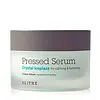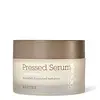What's inside
What's inside
 Benefits
Benefits

 Concerns
Concerns

 Ingredients Side-by-side
Ingredients Side-by-side

Mesembryanthemum Crystallinum Extract 63%
HumectantWater
Skin ConditioningButylene Glycol
HumectantCyclopentasiloxane
EmollientGlycerin
Humectant1,2-Hexanediol
Skin ConditioningGlycereth-26
HumectantBis-PEG-18 Methyl Ether Dimethyl Silane
EmollientCyclohexasiloxane
EmollientSaccharomyces/Viscum Album Ferment Extract
Skin ConditioningLactobacillus/Soybean Ferment Extract
Skin ConditioningSaccharomyces/Imperata Cylindrica Root Ferment Extract
EmollientLeuconostoc/Radish Root Ferment Filtrate
AntimicrobialPolyglutamic Acid
Skin ConditioningSelaginella Tamariscina Extract
Skin ConditioningCuscuta Australis Seed Extract
Skin ConditioningHouttuynia Cordata Extract
Skin ConditioningEucalyptus Globulus Leaf Extract
PerfumingPueraria Lobata Root Extract
HumectantUlmus Davidiana Root Extract
Skin ConditioningOenothera Biennis Flower Extract
AstringentPinus Palustris Leaf Extract
TonicMelia Azadirachta Leaf Extract
Skin ConditioningMelia Azadirachta Flower Extract
Skin ConditioningCoccinia Indica Fruit Extract
Skin ConditioningSolanum Melongena Fruit Extract
Skin ConditioningAmber Powder
Curcuma Longa Root Extract
MaskingOcimum Sanctum Leaf Extract
Skin ConditioningMoringa Oleifera Seed Oil
EmollientCorallina Officinalis Extract
Skin ConditioningCandida Bombicola/Glucose/Methyl Rapeseedate Ferment
AntimicrobialArgania Spinosa Kernel Oil
EmollientOlea Europaea Fruit Oil
MaskingCitrus Limon Peel Oil
MaskingLavandula Angustifolia Oil
MaskingCitrus Aurantifolia Oil
CleansingEucalyptus Globulus Leaf Oil
PerfumingRosmarinus Officinalis Leaf Oil
MaskingJuniperus Mexicana Oil
MaskingChamomilla Recutita Flower Oil
MaskingPelargonium Graveolens Flower Oil
MaskingAmmonium Acryloyldimethyltaurate/Vp Copolymer
Polyurethane-39
Acrylates/C10-30 Alkyl Acrylate Crosspolymer
Emulsion StabilisingAllantoin
Skin ConditioningDimethicone Crosspolymer
Emulsion StabilisingPotassium Hydroxide
BufferingXanthan Gum
EmulsifyingDisodium EDTA
Mesembryanthemum Crystallinum Extract 63%, Water, Butylene Glycol, Cyclopentasiloxane, Glycerin, 1,2-Hexanediol, Glycereth-26, Bis-PEG-18 Methyl Ether Dimethyl Silane, Cyclohexasiloxane, Saccharomyces/Viscum Album Ferment Extract, Lactobacillus/Soybean Ferment Extract, Saccharomyces/Imperata Cylindrica Root Ferment Extract, Leuconostoc/Radish Root Ferment Filtrate, Polyglutamic Acid, Selaginella Tamariscina Extract, Cuscuta Australis Seed Extract, Houttuynia Cordata Extract, Eucalyptus Globulus Leaf Extract, Pueraria Lobata Root Extract, Ulmus Davidiana Root Extract, Oenothera Biennis Flower Extract, Pinus Palustris Leaf Extract, Melia Azadirachta Leaf Extract, Melia Azadirachta Flower Extract, Coccinia Indica Fruit Extract, Solanum Melongena Fruit Extract, Amber Powder, Curcuma Longa Root Extract, Ocimum Sanctum Leaf Extract, Moringa Oleifera Seed Oil, Corallina Officinalis Extract, Candida Bombicola/Glucose/Methyl Rapeseedate Ferment, Argania Spinosa Kernel Oil, Olea Europaea Fruit Oil, Citrus Limon Peel Oil, Lavandula Angustifolia Oil, Citrus Aurantifolia Oil, Eucalyptus Globulus Leaf Oil, Rosmarinus Officinalis Leaf Oil, Juniperus Mexicana Oil, Chamomilla Recutita Flower Oil, Pelargonium Graveolens Flower Oil, Ammonium Acryloyldimethyltaurate/Vp Copolymer, Polyurethane-39, Acrylates/C10-30 Alkyl Acrylate Crosspolymer, Allantoin, Dimethicone Crosspolymer, Potassium Hydroxide, Xanthan Gum, Disodium EDTA
Dioscorea Villosa Root Extract 68.5%
Skin ConditioningCaprylic/Capric Triglyceride
MaskingGlycerin
HumectantButylene Glycol
Humectant1,2-Hexanediol
Skin ConditioningMacadamia Integrifolia Seed Oil
Skin ConditioningHydrogenated Polydecene
EmollientPolyglyceryl-3 Methylglucose Distearate
EmulsifyingButyrospermum Parkii Butter
Skin ConditioningHydroxyethylcellulose
Emulsion StabilisingCetearyl Olivate
Sorbitan Olivate
EmulsifyingDimethicone
EmollientGlyceryl Stearate
EmollientCetearyl Alcohol
EmollientCaprylic/Capric Glycerides
EmollientCandida Bombicola/Glucose/Methyl Rapeseedate Ferment
AntimicrobialArgania Spinosa Kernel Oil
EmollientOlea Europaea Fruit Oil
MaskingCitrus Aurantium Dulcis Peel Oil
MaskingAniba Rosaeodora Wood Oil
AstringentPelargonium Graveolens Flower Oil
MaskingXanthan Gum
EmulsifyingCarbomer
Emulsion StabilisingDisodium EDTA
Potassium Hydroxide
BufferingDioscorea Villosa Root Extract 68.5%, Caprylic/Capric Triglyceride, Glycerin, Butylene Glycol, 1,2-Hexanediol, Macadamia Integrifolia Seed Oil, Hydrogenated Polydecene, Polyglyceryl-3 Methylglucose Distearate, Butyrospermum Parkii Butter, Hydroxyethylcellulose, Cetearyl Olivate, Sorbitan Olivate, Dimethicone, Glyceryl Stearate, Cetearyl Alcohol, Caprylic/Capric Glycerides, Candida Bombicola/Glucose/Methyl Rapeseedate Ferment, Argania Spinosa Kernel Oil, Olea Europaea Fruit Oil, Citrus Aurantium Dulcis Peel Oil, Aniba Rosaeodora Wood Oil, Pelargonium Graveolens Flower Oil, Xanthan Gum, Carbomer, Disodium EDTA, Potassium Hydroxide
Ingredients Explained
These ingredients are found in both products.
Ingredients higher up in an ingredient list are typically present in a larger amount.
1,2-Hexanediol is a synthetic liquid and another multi-functional powerhouse.
It is a:
- Humectant, drawing moisture into the skin
- Emollient, helping to soften skin
- Solvent, dispersing and stabilizing formulas
- Preservative booster, enhancing the antimicrobial activity of other preservatives
You may know this ingredient as argan oil. Argan Oil has antioxidant, hydrating, and soothing properties.
Studies have shown argan oil can help fight again radical damage from the sun. This makes it effective at preventing hyperpigmentation.
Large amounts of vitamin E found in argan oil helps the skin retain water. Argan oil also contains fatty acids such as linoleic acid, oleic acid, and palmitic acid. It is also a good source of lipids.
Another benefit of argan oil is skin-soothing. It can help reduce inflammation-related skin symptoms.
Argan Oil is effective at regulating sebum production in pores. This can make it effective at treating hormonal acne.
Traditionally, argan oil was used for its antibacterial and antifungal properties. However, argan oil contains fatty acids that may make it not fungal-acne safe.
Argan Trees are native to Morocco.
Learn more about Argania Spinosa Kernel OilButylene Glycol (or BG) is used within cosmetic products for a few different reasons:
Overall, Butylene Glycol is a safe and well-rounded ingredient that works well with other ingredients.
Though this ingredient works well with most skin types, some people with sensitive skin may experience a reaction such as allergic rashes, closed comedones, or itchiness.
Learn more about Butylene GlycolWe don't have a description for Candida Bombicola/Glucose/Methyl Rapeseedate Ferment yet.
Disodium EDTA plays a role in making products more stable by aiding other preservatives.
It is a chelating agent, meaning it neutralizes metal ions that may be found in a product.
Disodium EDTA is a salt of edetic acid and is found to be safe in cosmetic ingredients.
Learn more about Disodium EDTAGlycerin is already naturally found in your skin. It helps moisturize and protect your skin.
A study from 2016 found glycerin to be more effective as a humectant than AHAs and hyaluronic acid.
As a humectant, it helps the skin stay hydrated by pulling moisture to your skin. The low molecular weight of glycerin allows it to pull moisture into the deeper layers of your skin.
Hydrated skin improves your skin barrier; Your skin barrier helps protect against irritants and bacteria.
Glycerin has also been found to have antimicrobial and antiviral properties. Due to these properties, glycerin is often used in wound and burn treatments.
In cosmetics, glycerin is usually derived from plants such as soybean or palm. However, it can also be sourced from animals, such as tallow or animal fat.
This ingredient is organic, colorless, odorless, and non-toxic.
Glycerin is the name for this ingredient in American English. British English uses Glycerol/Glycerine.
Learn more about GlycerinOlea Europaea Fruit Oil is the fixed oil obtained from the ripe fruit of the Olive. In other words - olive oil.
The primary contents of olive oil are glycerides of the fatty acids linoleic, oleic and palmitic.
Olive oil also contains antioxidants such as Vitamin E. Antioxidants may help reduce signs of aging by fighting unstable free-radical molecules. It also contains Vitamins A (retinol), D, and K.
The squalene in olive oil makes it a great emollient. Emollients help soothe and soften your skin by trapping moisture in. This makes olive oil a great skin moisturizer.
Studies show olive oil to have antibacterial and antifungal properties in low concentrations. Another study found olive oil irritated sensitive oily skin. We always recommend speaking with a professional about using this ingredient in your routine.
Due to the fatty acid content, this ingredient may not be fungal-acne safe.
Learn more about Olea Europaea Fruit OilPelargonium Graveolens Flower Oil is the pressed oil of the Rose Geranium plant. It is volatile, meaning it evaporates off the skin.
Fragrant components of Rose Geranium include citronellol and geraniol. These may cause allergies and skin-sensitivity. We recommend speaking with a professional if you have any concerns.
The scent of Rose Geranium closely resembles traditional roses.
Learn more about Pelargonium Graveolens Flower OilPotassium hydroxide is commonly known as caustic potash. It is used to fix the pH of a product or as a cleaning agent in soap. In cleansers, it is used for the saponification of oils.
Sapnification is the process of creating fatty acid metal salts from triglycerides and a strong base. During this process, Potassium Hydroxide is used up and is not present in the final product.
Using high concentrations of Potassium Hydroxide have shown to irritate the skin.
Learn more about Potassium HydroxideXanthan gum is used as a stabilizer and thickener within cosmetic products. It helps give products a sticky, thick feeling - preventing them from being too runny.
On the technical side of things, xanthan gum is a polysaccharide - a combination consisting of multiple sugar molecules bonded together.
Xanthan gum is a pretty common and great ingredient. It is a natural, non-toxic, non-irritating ingredient that is also commonly used in food products.
Learn more about Xanthan Gum